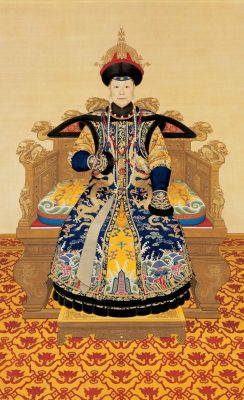History of the Silkworm
The History of the Silkworm, also the story of Silk, goes back to ancient times in China. The most common tale on the origins of the Silkworm begins in 2640 B.C. when Si-Ling-Chi, a Chinese Empress was simply walking through her garden, when a ‘cocoon’ (of a Silkworm) dropped into her tea. Upon picking it up, she found the cocoon begun to unravel, forming a beautiful string of what is now known as ‘Silk’.
After looking for the origin of this cocoon, Ling-Chi studied the Mulberry tree above her, and couldn’t help but notice all of the small caterpillars (Silkworms) crawling around. She came to the conclusion that the Cocoon had come from the small caterpillars.
For 2500 years, the royal family of China had kept the secret of Silk to themselves. The material was sold to the rulers of the West, but the source of the shiny thread that made the material was not revealed. The penalty in China for revealing the true source of the shiny thread was in fact death!
Some very strange ideas were formulated as to the origin of Silk, such as the idea that; Silk came from the coloured petals of flowers in the Chinese desert, Silk was made of wondrously soft soil, Silk came from a spider-like animal that ate until it burst open and that the Silk threads were found inside its body, and Silk came from the Silky fuzz on special leaves. These ideas seem far-fetched today — but in ancient times they were serious theories.
How did Silk come to be found by the rest of the world? Two poor monks told Emperor Justinian of Constantinople that they had learned the secret of Silk, after arriving back in Constantinople after travelling to China. Justinian sent them back to China to get some eggs and mulberry shoots for him, so that he too could raise Silkworms and create beautiful products made of Silk. The Monks returned many years later with the eggs and shoots hidden inside their hollowed-out walking sticks. Since Justinian was the emperor of Constantinople, a crossroads city, the secret soon spread throughout Europe. This trek the monks took, has now come to be known as the Silk Road, and this road was a major breaking point in what in now modern-day trade.
Don’t forget that you can have a go at rearing your own Silkworms, as has been done for thousands of years! Visit out store to get your own by following this link.

Away from the legend
Silk was first reared in Ancient China. Remnants of Silk have been found as far back as 8,500 years ago, in neolithic tombs in China. It was originally exclusively used by emperors and empress’ in Ancient China, and was a symbol of wealth. From there, evidence of its spreading can be found on the Indian sub-continent. From here, it reached the Middle East, Africa and Europe. This route today has come to be known as the Silk Road.
The Emperors of China tried to keep their knowledge of sericulture a secret in order to maintain their monopoly. Nonetheless, sericulture reached Korea in around 200 BC, and India by 140 AD. Over history many countries have battled away with China to break their monopoly, including Bangladesh, where Bengal was the world’s leading importer of Silk from the 16th to 19th centuries.
Fun Fact: North Korea is the world’s 8th largest exporter of Silk, selling 1,500,000 kgs on average each year.

How are Silkworms Relevant Today?
Today, Silk remains as popular and important as ever. It is primarily produced in China, with India being the second largest producer in the world. Silkworms are generally reared for the primary purpose of extracting their Silk, however they have many uses and are also used as food – both for animal and human consumption – and research.
Silk isn’t called the queen of all textile for nothing! Silk is elegant, soft and durable. It is in fact nature’s strongest natural fibre, and pound for pound, is stronger than steel. The future of Silk is also very exciting, Thanks to modern science, new developments have allowed for genetic modifications in the genome of the Silkworm, which have allowed for rapid advancements. Think about protection used by soldiers in battle! It is very heavy and often uncomfortable. Scientists have harnessed the strength and lightweight nature of Silk to develop armour for soldiers. There is also talk of it being used in construction to supplement other materials such as steel. Would you trust a building constructed using steel?! This is also not to mention that it will continue to be used in your favourite clothing items.

